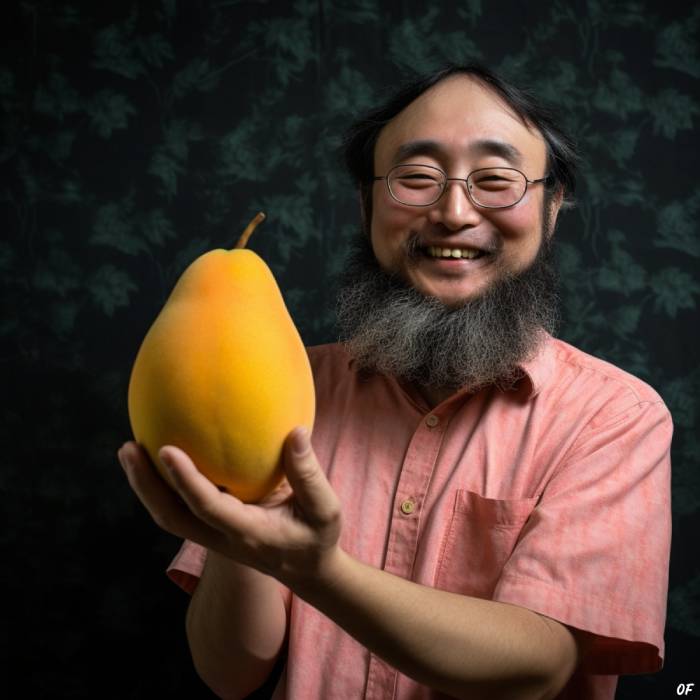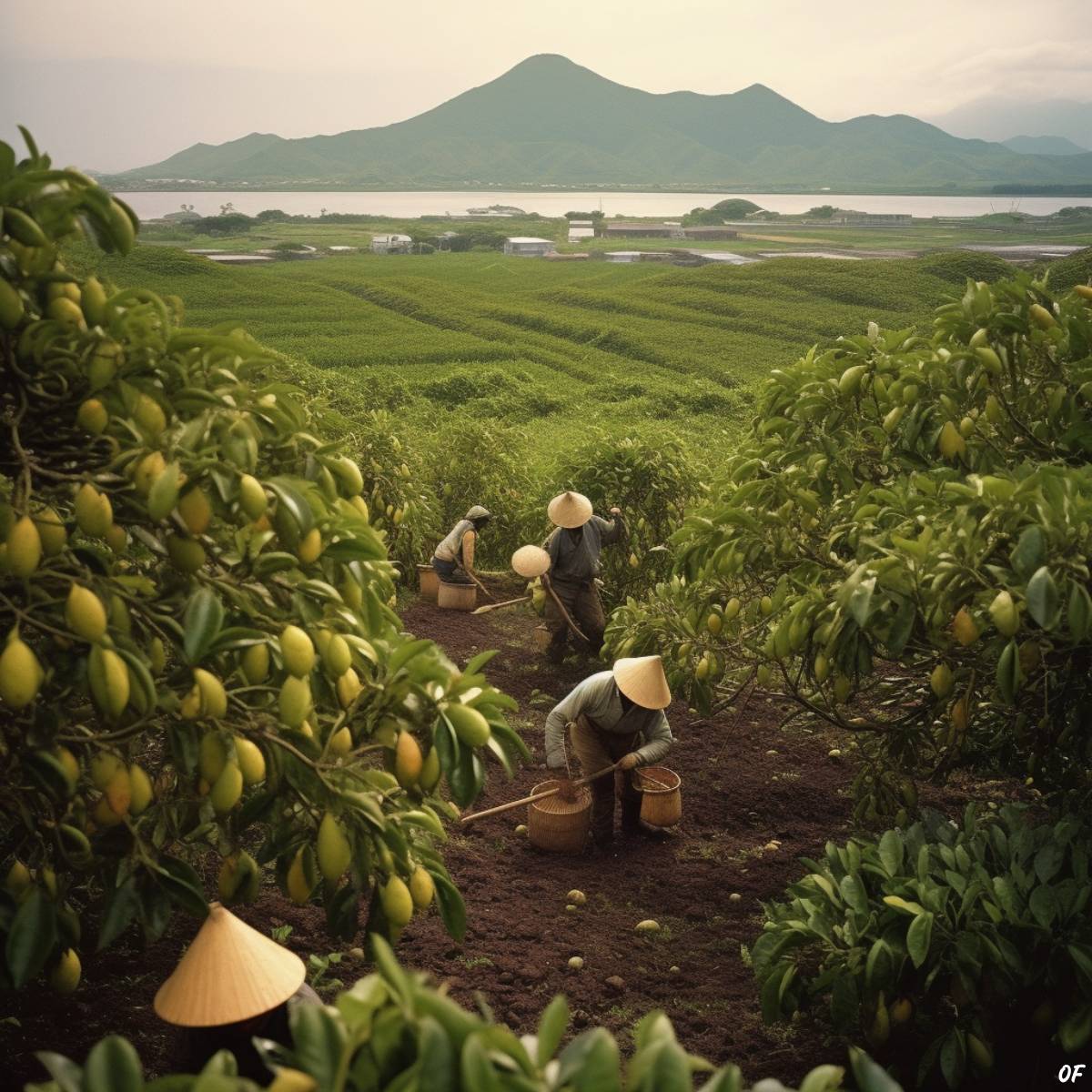In the realm of the gastronomic world, where luxury and exclusivity often collide, we find the remarkable Miyazaki Mango, or Taiyo no Tamago—a fruit that challenges the norms of what we consider ‘just’ a fruit. Nestled on the southern island of Kyushu, Japan, the Miyazaki Prefecture has given birth to a mango variety that has been crowned as the most expensive in the world. But the question arises: what makes this mango worth its weight in gold?
The story of Miyazaki Mangoes begins in the late 1980s, when farmers in the region began experimenting with different cultivation techniques to enhance the quality of their mango crops. By manipulating factors like temperature and sunlight, they aimed to grow a mango that was not just juicy and sweet, but also uniformly colored and devoid of any imperfections. The fruit of their labor was the Miyazaki Mango, a mango variety that was superior in every way to its counterparts.
Over the years, Miyazaki Mangoes, named after their place of origin, have become a symbol of luxury and exclusivity. Each year, a limited quantity of these most costly fruits are grown, and they are auctioned off to the highest bidder, often fetching exorbitant prices. In 2020, a pair of Miyazaki Mangoes was sold for an astounding 500,000 yen, approximately $4,500, making headlines across the globe.
The Miyazaki Mango’s journey from a humble tropical fruit to a luxury item coveted by the elite is a fascinating tale of innovation, perseverance, and a deep understanding of the art of fruit cultivation.
The allure of Taiyo no Tamago
Enveloped in a radiant, sun-kissed hue, the Miyazaki Mango is a visual spectacle. Its skin, smooth and blemish-free, boasts a vibrant orange-red color, embodying the warmth of the Japanese sun under which it matures. But it’s not just the outer allure that sets this mango apart; what lies beneath the skin is equally captivating.
The Miyazaki Mango has been cultivated to perfection, ensuring a flawless, sweet orange flesh that is succulent, and virtually fiberless. Each bite of this sumptuous fruit reveals a sweetness that surpasses that of any conventional mango, yet it manages to strike a perfect balance, preventing it from being overly saccharine. This perfect harmony of sweetness and acidity has led to the Miyazaki Mango being likened to a symphony of flavors that dance on the palate, leaving a lingering taste that is nothing short of divine.
The fruit’s size is another attribute that contributes to its distinction. A single Miyazaki Mango weighs up to 350 grams, much larger than the average mango. Yet, despite its size, the fruit maintains an uncanny symmetry, further enhancing its visual appeal.
The art of cultivation
The cultivation of Miyazaki Mangoes is a meticulous process that requires an intricate understanding of nature’s workings, a healthy dose of patience, and a reverence for the fruit itself.
Ideal growing conditions are paramount in producing the perfect Miyazaki Mango. This special fruit thrives in a warm and humid climate, and Miyazaki’s sub tropical climate fits the bill perfectly. This, coupled with the region’s fertile volcanic soil, and abundant sunlight, provides the perfect canvas for the mango to grow.
However, growing a Miyazaki Mango is not as simple as planting a mango seed and waiting for nature to take its course and the fruit is fully ripened . Farmers employ a method known as “warming cultivation,” where the mango trees are covered with reflective sheets during the colder months. This technique creates a greenhouse-like environment that protects the trees from the cold and encourages the fruit to mature even during winter.
Each Miyazaki Mango plant is pampered like a precious child. Farmers selectively prune the trees to ensure that only a limited number of fruits are allowed to grow on each tree. This way, each mango plant receives ample nutrients and sunlight, facilitating its growth and enhancing its flavor.
Moreover, to prevent any blemishes or spots on the fruit, each mango is lovingly enveloped in a netted bag. This bag shields the fruit from pests and the elements, ensuring that it remains unblemished as it ripens.
When the mangoes reach the desired size and color—an exquisite blend of vibrant red and deep orange—they are handpicked with utmost care. Even after normal harvesting time, the mangoes are allowed to ripen further until they achieve a sugar content of at least 15%, a standard set by the Miyazaki Agricultural Economic Federation.
This meticulous process of cultivation and the painstaking attention to detail that goes into growing each Miyazaki Mango are a testament to the dedication and craftsmanship of the farmers. It’s no wonder that the fruit, born of such care and commitment, is considered a true masterpiece.
Understanding the value of the most costly fruits
Just as diamonds and precious metals are judged by their cut, clarity, carat, and color, the Miyazaki Mango is evaluated by its own set of criteria: color, sugar content, and weight. Only the fruits that meet these stringent standards earn the right to be branded as Miyazaki Mangoes. But the exclusivity and quality of this fruit alone don’t fully explain the sky-high price. Several other factors contribute to its cost.

Firstly, the meticulous cultivation process, which requires an immense amount of time, labor, and care, significantly drives up the cost of the fruit. From the warming cultivation method to the selective pruning and netting of each mango, every step is labor-intensive and requires a high level of expertise.
Secondly, scarcity plays a significant role in the fruit’s high price. The strict standards set by the Miyazaki Agricultural Economic Federation mean that not all mangoes grown in the region can be classified as Miyazaki Mangoes. Only the best of the best receive this honor, making them a rare commodity on the international market.
Moreover, the cultural practice of gift-giving in Japan, known as Omiyage, also fuels the demand for Miyazaki Mangoes. High-quality fruits are considered prestigious gifts, and given the reputation of the Miyazaki Mango, it’s a sought-after item for this purpose.
Lastly, the high price of the Miyazaki Mango is also a reflection of its status as a luxury item. Just as people are willing to pay high prices for designer clothing or luxury cars, connoisseurs of fine foods are prepared to pay a premium for the unparalleled taste and quality of the Miyazaki Mango.
The healthful indulgence: nutritional benefits of the Miyazaki Mango
While the Miyazaki Mango may be a luxurious indulgence, it’s not devoid of nutritional benefits. In fact, it’s a powerhouse of essential nutrients that contribute to overall health and well-being.
Firstly, the Miyazaki Mango is rich in Vitamins A and C, both of which are vital for maintaining healthy bodily functions. Vitamin A plays a crucial role in vision and immune function, while Vitamin C is a potent antioxidant that aids in protecting the body against harmful free radicals.
Furthermore, this mango variety is packed with dietary fiber. Regular consumption of fiber aids digestion, helps maintain a healthy weight, and can lower the risk of developing chronic diseases such as heart disease and diabetes.
The Miyazaki Mango is also a good source of potassium, a mineral that helps regulate fluid balance, muscle contractions, and nerve signals in the body. Additionally, it contains trace amounts of magnesium, calcium, and phosphorous, which contribute to bone health.
The Miyazaki Mango is a testament to the fact that luxury and health can coexist. It offers not just an unparalleled gastronomic experience, but also a myriad of health benefits, making it a truly indulgent yet healthful treat.
Savoring the luxury: how to enjoy the Miyazaki Mango
If you’re lucky enough to get your hands on a Miyazaki Mango, you’ll want to ensure that you make the most of this indulgence. Here are some tips on how to select, store, and enjoy this extraordinary fruit.
When selecting a Miyazaki Mango, look for a vibrant color—a blend of rich red and deep orange. The fruit should feel firm but yield slightly to gentle pressure, indicating that it’s ripe and ready to eat.
Once you’ve procured this coveted fruit, it’s best to consume it within a couple of days. If you need to store it, keep it at room temperature away from direct sunlight. Avoid refrigeration as it can hamper the fruit’s ripening process and alter its taste and texture.
As for how to enjoy a Miyazaki Mango, simplicity is key. This mango is best enjoyed fresh, allowing its natural sweetness and complex flavor profile to shine through. Simply slice the mango along its pit, scoop out the sweet orange flesh inside, and savor every bite.
However, if you wish to incorporate the Miyazaki Mango into dishes, there are countless possibilities. It makes a delightful addition to salads, providing a sweet contrast to savory ingredients. You can also use it in desserts like mango pudding or mango sorbet, where its rich flavor and sweetness will undoubtedly elevate the dish.
The Miyazaki Mango is also fantastic in beverages. You could blend it into a smoothie, use it to make a refreshing mango lemonade, or even incorporate it into a cocktail for a tropical twist.
Whatever way you choose to enjoy the Miyazaki Mango, remember to savor the experience. After all, each bite of the Miyazaki Mango is a celebration of the extraordinary effort that goes into its cultivation, the reverence for nature that it represents, and the pursuit of perfection that it embodies.
A fruit ripe for your bucket list
The Miyazaki Mango, with its stunning color, unparalleled taste, and hefty price tag, has intrigued and captivated the world. It’s not just a fruit; it’s a testament to human ingenuity and the relentless pursuit of perfection. Its meticulous cultivation process, the rigorous standards it must meet, and the cultural significance it holds contribute to its status as a luxury item.
Yet, beyond the luxury and exclusivity, lies a fruit that is brimming with essential nutrients, offering numerous health benefits. Whether you savor it fresh or incorporate it into your culinary creations, the Miyazaki Mango promises an unforgettable gastronomic experience.
So, the next time you come across a Miyazaki Mango, remember the labor of love that has gone into its cultivation. Appreciate the skill and dedication of the farmers who have nurtured it to perfection. And most importantly, savor the extraordinary symphony of flavors that it offers. For the Miyazaki Mango is not merely a fruit; it’s a celebration of nature’s bounty, human endeavor, and the exquisite harmony between the two.


